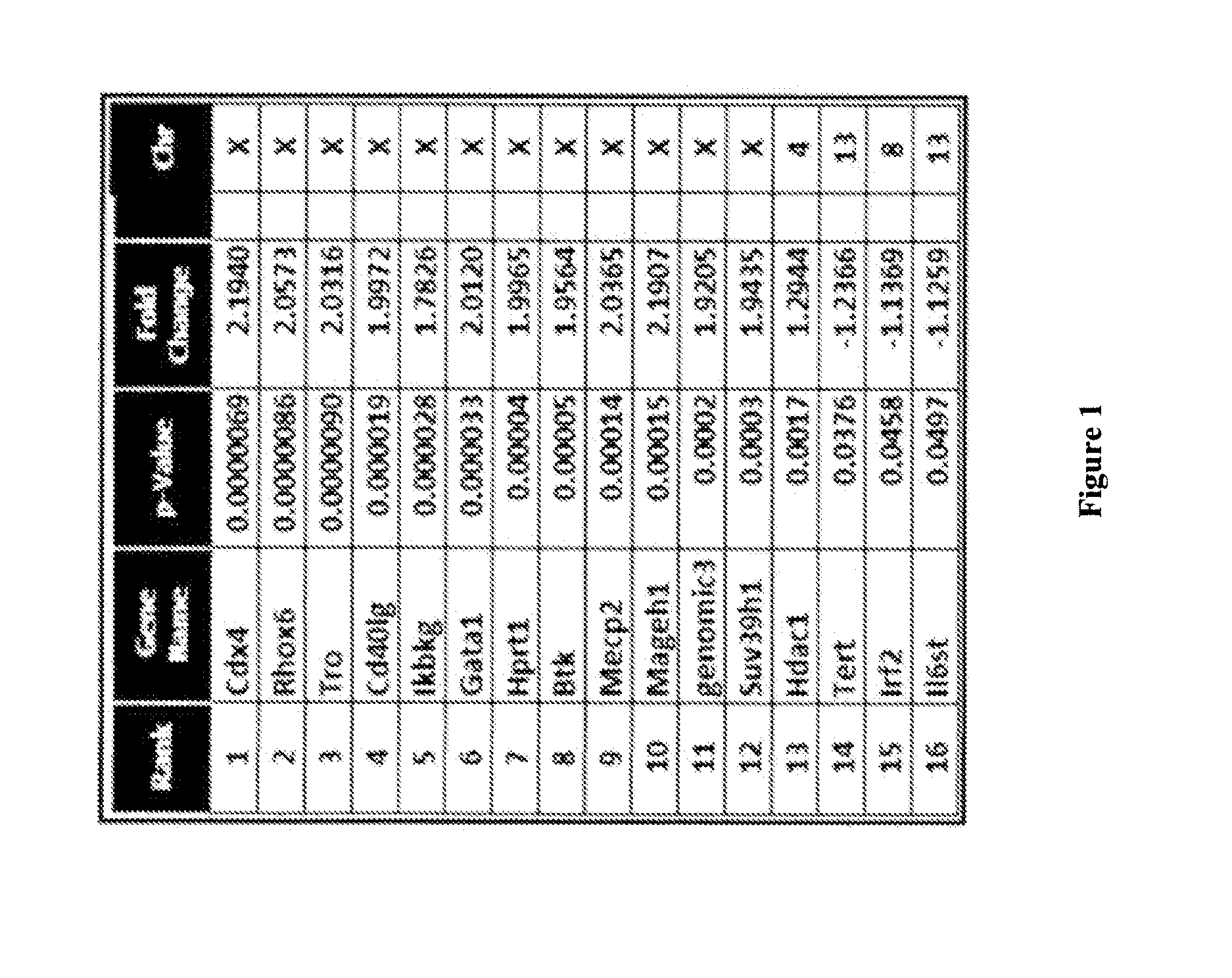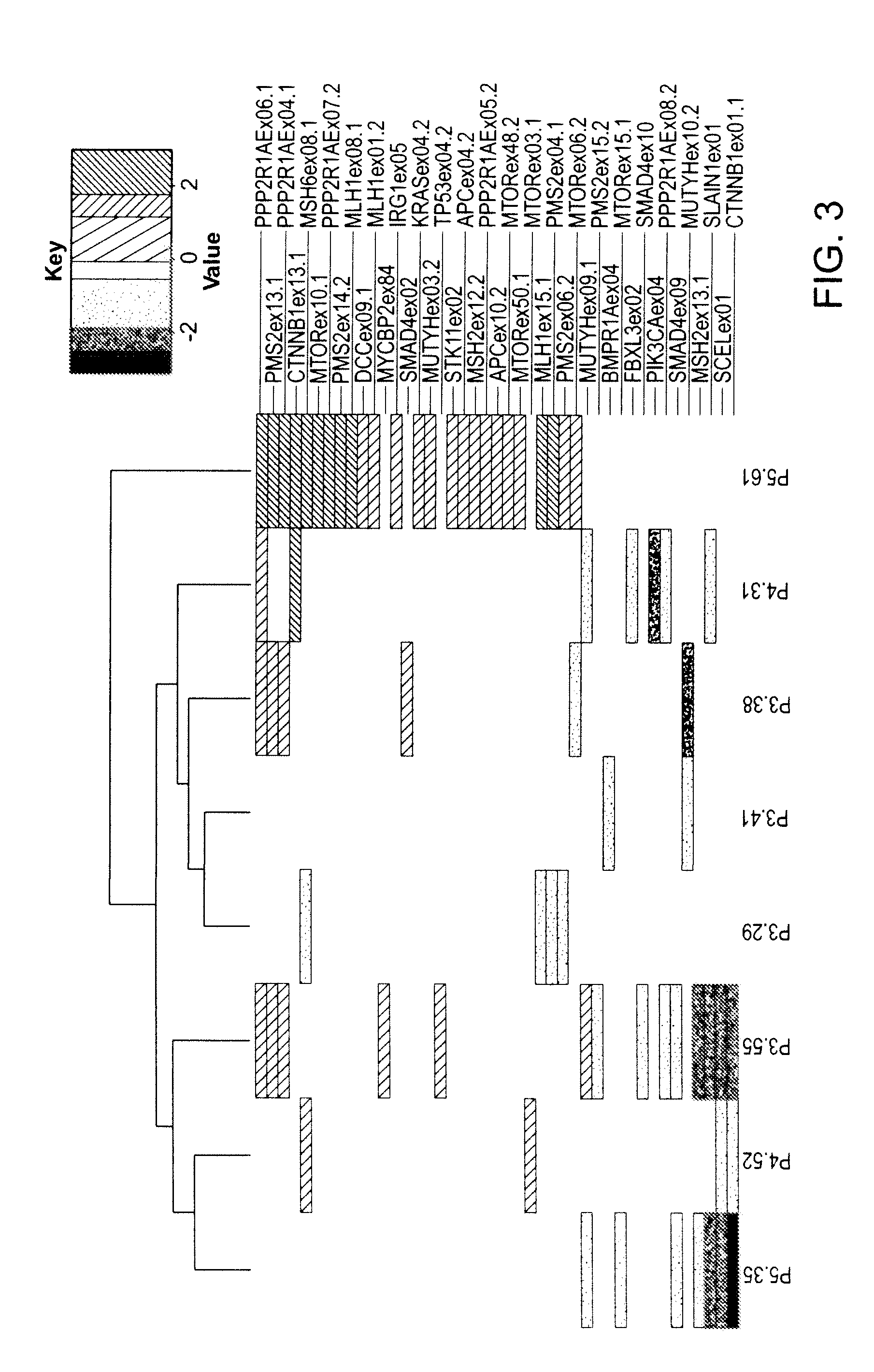Methods for assessing disease risk
a disease risk and risk assessment technology, applied in the field of methods for assessing disease risk, can solve problems such as genetic diseases, unmasking of recessive alleles, and altered gene expression
- Summary
- Abstract
- Description
- Claims
- Application Information
AI Technical Summary
Benefits of technology
Problems solved by technology
Method used
Image
Examples
example 1
Exon Copy Number Variation (ECNV) Profiling for Colorectal Cancer Risk Assessment
[0272]In this example, ECNV profiles for colorectal cancer risk assessment were created using genomic DNA samples from non-cancerous cells. The creation of ECNV profiles facilitates the detection of genomic aberrations and results in an improvement in disease association studies.
[0273]1. Introduction
[0274]Genome-wide association studies (GWAS) enable the evaluation of many genetic markers across multiple genomes to discover variations associated with a disease. Once identified, these markers may serve as useful indicators to help develop and / or direct the course of medical treatments and may have the potential to predict the risk of disease onset in humans. Additionally, physical quantitative traits (phenotypes) can be used as genetic markers in a similar manner helping to define genetic regions (Quantitative Trait Loci—QTL) associated with disease.
[0275]One such large GWAS was conducted by the Internat...
example 2
ECNV Profiling for Autoimmune Disease Risk Assessment
[0301]1. ECNV Profiling of Systemic Lupus Erythematosus in Mouse Models
[0302]In this example, ECNV profiles were created for autoimmune disease risk assessment. ECNVs of exons of marker genes Mid1, Mid2, and PPP2R1A were studied using mouse models of systemic lupus erythematosus (SLE or lupus).
[0303]The StellARray™ qPCR array system (Lonza, Switzerland) was used to verify multi-gene copy number polymorphisms in two strains of mice, BXSB and MRL. Both strains are known to be susceptible to lupus, although the severity and the rapidity of onset of lupus are different between the two.
[0304]Mice of the BXSB strain develop spontaneous autoimmune disease, systemic lupus erythematosus (SLE), characterized by moderate lymph node and spleen enlargement, hemolytic anemia, hypergammaglobulinemia, and immune complex glomerulonephritis. The disease process in BXSB is strikingly accelerated in males, which live little more than a third as long ...
example 3
ECNV Profiling for Neurological Disease Risk Assessment
[0333]In this example, ECNV profiles were created for neurological disease risk assessment. ECNVs of exons of marker genes APOE, APP, PSEN1, PSEN2 and PSENEN in subjects with Alzheimer's disease were studied.
[0334]Alzheimer's disease (AD) is a complex multigenic neurological disorder characterized by progressive impairments in memory, behavior, language, and visuo-spatial skills, ending ultimately in death. Hallmark pathologies of Alzheimer's disease include granulovascular neuronal degeneration, extracellular neuritic plaques with β-amyloid deposits, intracellular neurofibrillary tangles and neurofibrillary degeneration, synaptic loss, and extensive neuronal cell death. It is now known that these histopathologic lesions of Alzheimer's disease correlate with the dementia observed in many elderly people.
[0335]Alzheimer's disease is commonly diagnosed using clinical evaluation including, physical and psychological assessment, an e...
PUM
 Login to View More
Login to View More Abstract
Description
Claims
Application Information
 Login to View More
Login to View More - R&D
- Intellectual Property
- Life Sciences
- Materials
- Tech Scout
- Unparalleled Data Quality
- Higher Quality Content
- 60% Fewer Hallucinations
Browse by: Latest US Patents, China's latest patents, Technical Efficacy Thesaurus, Application Domain, Technology Topic, Popular Technical Reports.
© 2025 PatSnap. All rights reserved.Legal|Privacy policy|Modern Slavery Act Transparency Statement|Sitemap|About US| Contact US: help@patsnap.com



